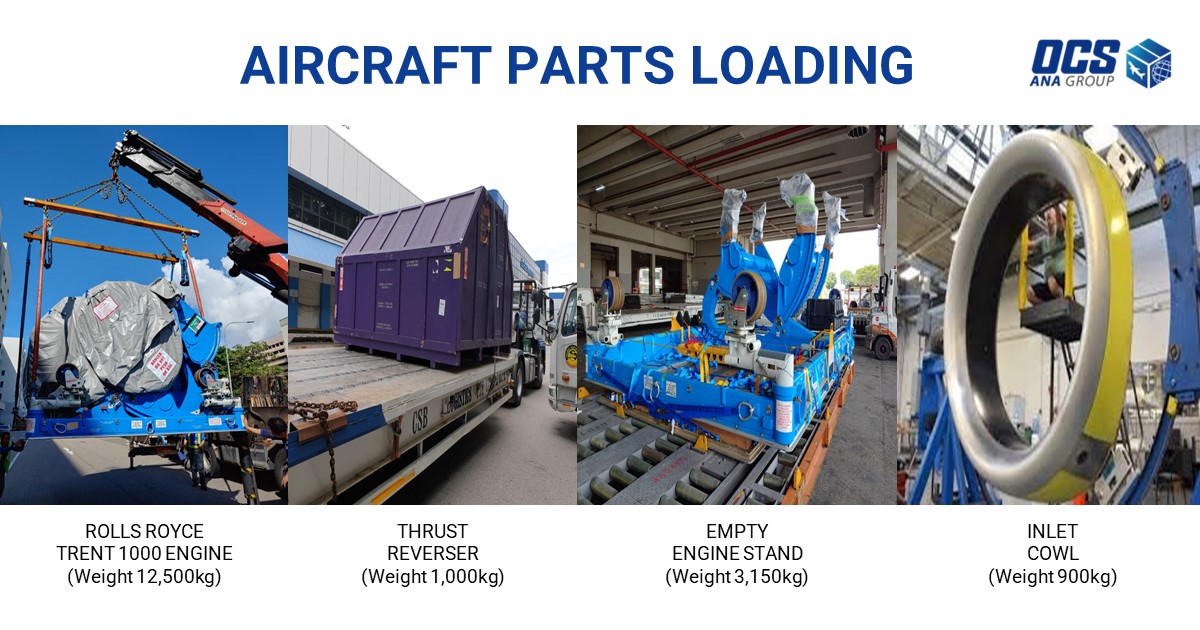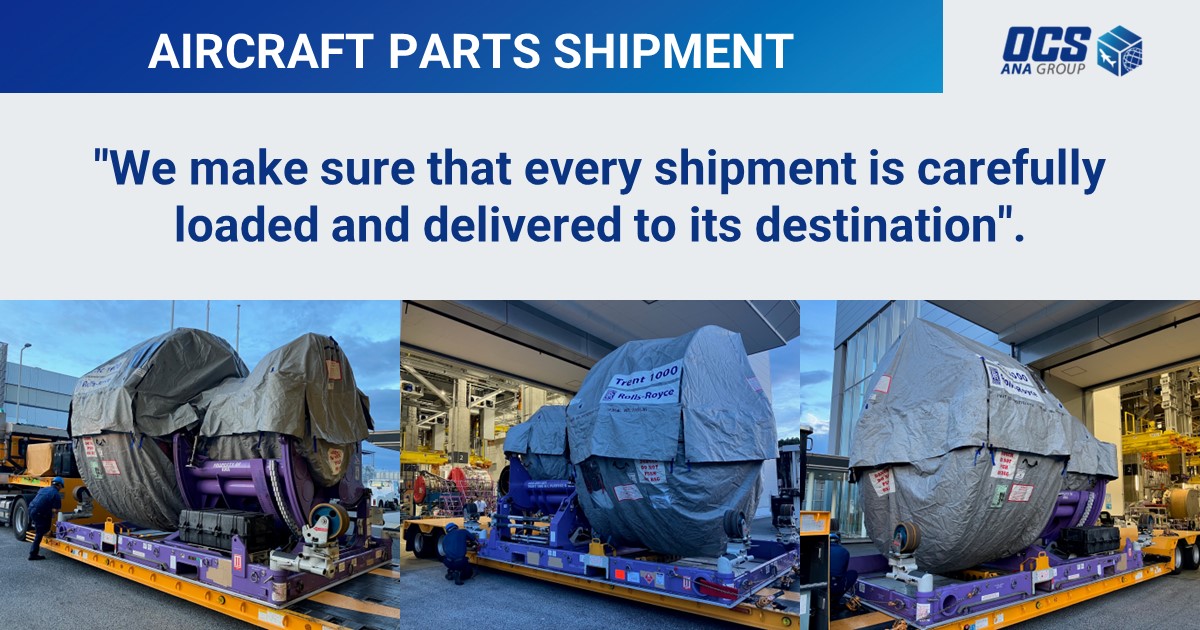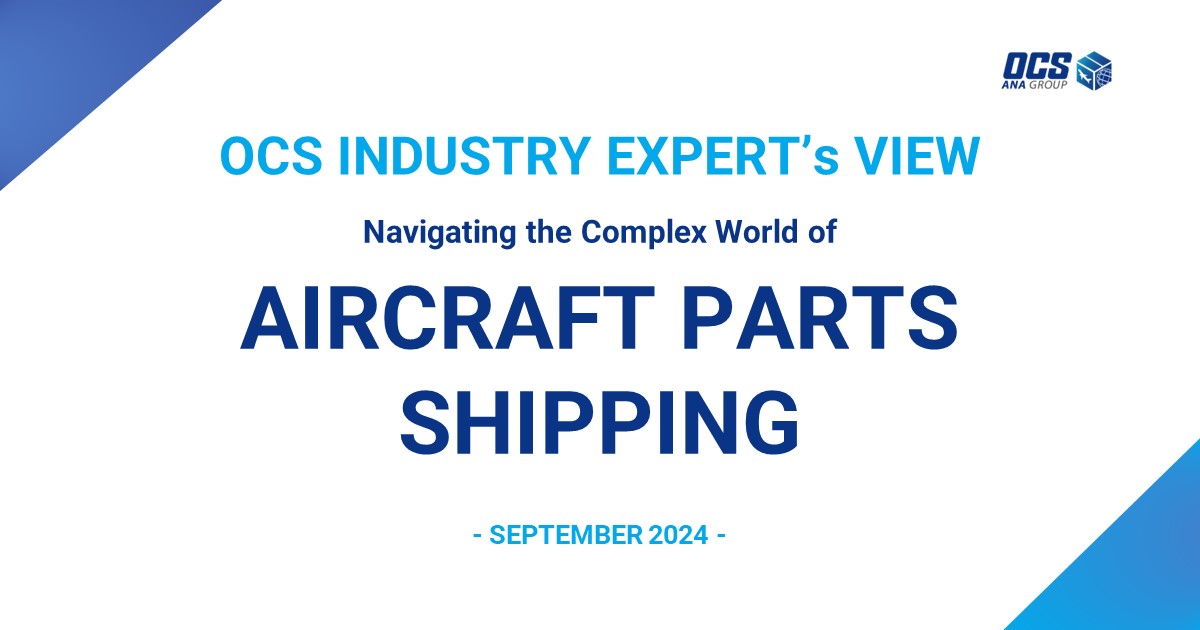The Challenges, Solutions, and the Role of OCS
The aviation industry is one of the most vibrant and dynamic sectors across the globe. It plays a vital role in the global supply chain, facilitating the movement of people, goods, and services around the world. Among the myriad of activities involved in this sector, shipping aircraft parts stands as a crucial aspect that demands precision, efficiency, and a deep understanding of various regulations. This process is not as simple as typical cargo shipping. It is a complex operation that involves logistics, supply chain management, regulatory compliance, and a unique set of challenges. This article will give you a better understanding of the world of aircraft parts shipping, outlining its importance, its challenges, and the role of technology in streamlining this important process.
Understanding Aircraft Parts Shipping
[Image: An aircraft in an AOG maintenance hangar]
Shipping aircraft parts is a crucial operation in the aviation industry. It involves complex logistics and requires strict adherence to numerous regulations and safety standards. The importance of this process lies in the fact that aircraft parts are highly regulated goods, with stringent handling and transportation requirements.
The parts themselves can range from small components like bolts or screws to larger, more complex pieces such as engines or fuselage sections. Regardless of their size, all aircraft parts need to be handled with utmost care to ensure they arrive at their destination in perfect condition. Any damage in transit can compromise the part's functionality, posing a significant safety risk and potentially grounding aircraft, resulting in costly delays.
The urgency associated with shipping aircraft parts is often high. Aircraft on Ground (AOG) situations, where an aircraft cannot fly due to a missing or broken part, can cost airlines tens of thousands of dollars per hour. This puts immense pressure on carriers to deliver quickly and efficiently to minimize downtime and keep airlines running smoothly.
Challenges in Aircraft Parts Shipping
[Image: Different types of aircraft parts are being loaded for transportation]
Shipping aircraft parts is fraught with challenges, largely due to the nature of the goods being transported. First, aircraft parts, especially larger components like engines or wings, are often oversized and heavy. This requires specialized handling and transportation equipment. For instance, shipping an aircraft engine requires a carrier that can handle its weight and dimensions while ensuring its safe transportation.
Second, aircraft parts are extremely valuable, delicate, and sensitive to environmental conditions. This requires specialized packaging and careful handling to prevent any form of damage during transit. Even minor scratches or dents can render an aircraft part unusable, leading to significant financial loss and potential safety risks.
The third challenge is the urgency associated with most shipments. Given the high cost of grounded aircraft, shipping companies are under immense pressure to deliver parts as quickly as possible. This requires a well-coordinated supply chain and efficient customs clearance procedures. Any delay at any point in the supply chain can lead to significant financial and operational implications.
Lastly, the regulatory landscape for aircraft parts shipping is complex and varies from one jurisdiction to another. Shippers must navigate through a myriad of regulations related to safety, customs, and international trade. Failure to comply can result in hefty penalties, and delays.
Overcoming these challenges requires expertise, experience, and a comprehensive understanding of the aviation industry. Shippers must work with reliable logistics providers with a proven track record in aircraft parts shipping.
Conclusion
Aircraft parts shipping is a complex, challenging, yet vital process in the aviation industry. It involves navigating through numerous logistical and regulatory hurdles, as well as adhering to strict safety standards. However, with the right partners and the use of advanced technology, it is possible to overcome these challenges and ensure the efficient and secure delivery of aircraft parts. OCS is well versed in managing the unique challenges of this process, from handling with oversized and fragile components to ensuring swift delivery in AOG situations. OCS has developed robust procedures and systems to ensure that every part is handled with the utmost care and arrives at its destination in perfect condition.
For more information
■ About IEX Customize: Read more
■ OCS Global Network: Office locations
■ Case Study: (TBD)
Visit OCS Official Global Social Media







.jpg)
.jpg)


